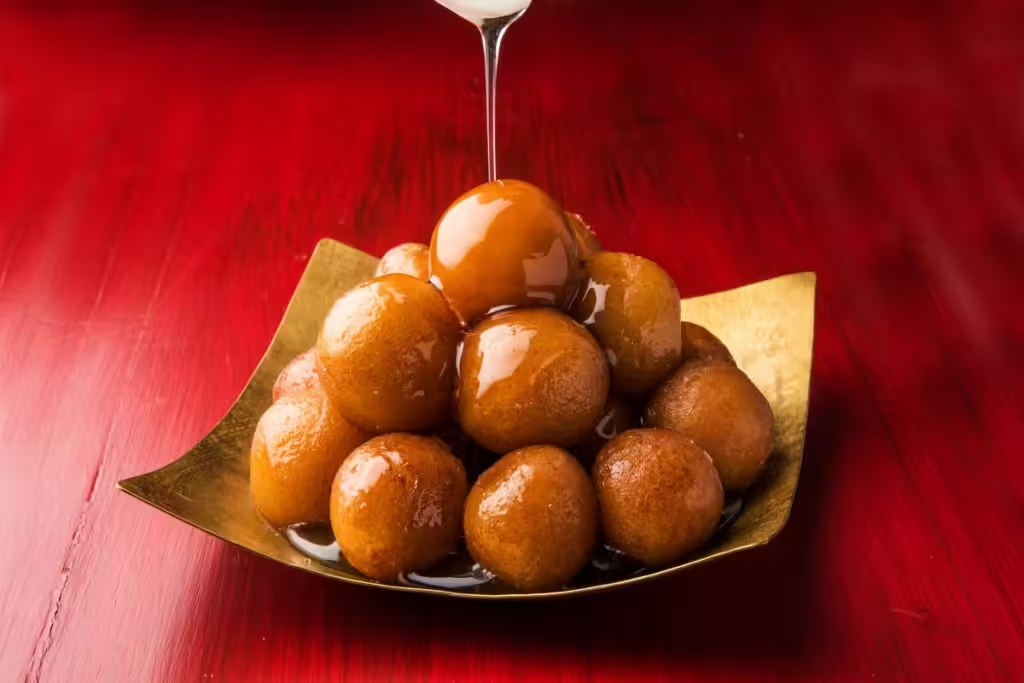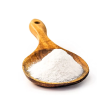Gulab Jamun: The Sweet Essence of Indian Celebration
Gulab Jamun stands as one of India’s most beloved desserts, enchanting people with its rich flavors and soft texture. These delightful, deep-fried dough balls, soaked in a fragrant sugar syrup, embody the spirit of celebration in Indian culture. Their irresistible sweetness has made them a staple at weddings, festivals, and family gatherings, inviting everyone to partake in the joy of sharing.
A Royal Origin: The History Behind Gulab Jamun
Delving into the history of Gulab Jamun reveals a fascinating journey through time. This delectable treat traces its origins back to the Mughal era, a time when culinary arts flourished in India. Initially known as “lunje,” it was a dessert reserved for the royal courts. The recipe found its roots in Persian cuisine, specifically inspired by a dish called “zoolbia,” which also features fried dough but with different flavor profiles.
The name “Gulab Jamun” derives from two words: “gol,” meaning flower in Persian, and “jamun,” referring to the dark purple fruit native to India. The dessert’s shape and color evoke this fruit, highlighting its cultural significance. Over centuries, Gulab Jamun has evolved, blending various regional flavors and ingredients, yet it retains its position as a symbol of love and festivity.
A Celebration of Togetherness: Cultural Significance
In India, Gulab Jamun transcends mere culinary delight; it embodies the essence of community and celebration. Families serve it during festivals such as Diwali, Eid, and Holi, marking moments of joy and togetherness. Each bite of this sweet treat brings back memories of shared laughter, joyous celebrations, and the warmth of home-cooked meals. It is not uncommon for families to prepare large quantities, ensuring everyone enjoys a piece, symbolizing abundance and goodwill.
The Art of Crafting Gulab Jamun: A Culinary Masterpiece
Creating the perfect Gulab Jamun is an art form that requires skill and patience. The primary ingredient, khoya (reduced milk), imparts a rich flavor and soft texture. Bakers knead the khoya with a bit of all-purpose flour to form a pliable dough. After shaping the dough into small balls, they deep-fry them to a golden brown, achieving that signature crisp exterior.
Once fried, the balls take a dip in a warm syrup infused with cardamom, rose water, and sometimes saffron, allowing them to soak up the sweetness. This careful process ensures that every piece bursts with flavor, making Gulab Jamun a true indulgence.
Innovative Twists: The Modern Reinventions
While the traditional version holds a special place in the hearts of many, modern culinary innovations have breathed new life into this classic dessert. Today, you might encounter variations such as chocolate-filled Gulab Jamun, where bakers introduce a decadent chocolate center, or fusion adaptations that incorporate ingredients like coconut, mango, or even matcha. These contemporary takes showcase the versatility of Gulab Jamun, appealing to a broader audience while honoring its rich heritage.
Savoring Gulab Jamun: A Sensory Experience
The experience of enjoying Gulab Jamun is truly indulgent. Served warm, the dough balls offer a delightful contrast between the crispy outer layer and the soft, syrup-soaked interior. Each bite provides a burst of sweetness, accentuated by the floral notes from the rose water. Many enjoy pairing Gulab Jamun with a scoop of vanilla ice cream or a drizzle of rabri (sweetened condensed milk), elevating the experience to new heights. This combination of flavors and textures creates a symphony that dances on the palate, leaving a lasting impression.
A Timeless Tradition
Gulab Jamun is more than just a dessert; it is a heartfelt connection to Indian culture, celebrating the bonds of family and friendship. Whether served at a lavish wedding or enjoyed as a comforting treat at home, this delightful sweet continues to bring people together. Its enduring appeal lies not only in its flavor but also in the memories it creates. As generations pass, Gulab Jamun will remain a cherished symbol of love, festivity, and the sweetness of life.
Discover Traditional Indian Recipes Discover Traditional Asian Recipes You may like this also: Chinese Tang Yuan
Indian Gulab Jamun
Ingredients
For Gulab Jamun:
For Sugar Syrup (Gulab):
Instructions
Prepare Sugar Syrup:
-
In a saucepan, combine sugar and water. Stir well.
-
Add crushed cardamom pods and saffron strands (if using).
-
Bring the mixture to a boil over medium heat, stirring occasionally.
-
Once the sugar has completely dissolved, reduce the heat to low and let it simmer for about 5-7 minutes until it slightly thickens.
-
Turn off the heat and add rose water (if using). Set aside.
Prepare Gulab Jamun Dough:
-
In a mixing bowl, combine powdered milk, all-purpose flour, and baking soda.
-
Add melted ghee or butter to the dry ingredients.
-
Mix everything together using your fingers until the mixture resembles breadcrumbs.
-
Gradually add milk, little by little, and knead the mixture into a soft dough. Be careful not to over-knead.
Shape and Fry the Gulab Jamun:
-
Divide the dough into small equal-sized portions and roll them into smooth balls without any cracks. Make sure they are smooth; if there are cracks, add a few drops of milk and knead again.
-
Heat oil or ghee in a deep frying pan over medium-low heat. To check if the oil is ready, drop a small piece of dough into the oil; if it rises slowly to the surface, the oil is ready.
-
Gently slide the rolled balls into the hot oil, one by one, without overcrowding the pan. Fry them on low to medium-low heat, stirring occasionally, until they turn golden brown from all sides. This might take around 8-10 minutes. Keep adjusting the heat to ensure even frying without burning.
-
Once fried, remove the Gulab Jamuns from the oil using a slotted spoon and drain them on paper towels to remove excess oil.
Soak in Sugar Syrup:
-
While the Gulab Jamuns are still warm, carefully transfer them into the prepared warm sugar syrup.
-
Let them soak in the syrup for at least 1-2 hours before serving. During this time, they will absorb the syrup and become soft and flavorful.
Serve:
-
Gulab Jamuns can be served warm or at room temperature. They taste delicious on their own or can be served with a scoop of vanilla ice cream for a delightful dessert.
-
Your homemade Gulab Jamuns are ready. Khana Khao!














